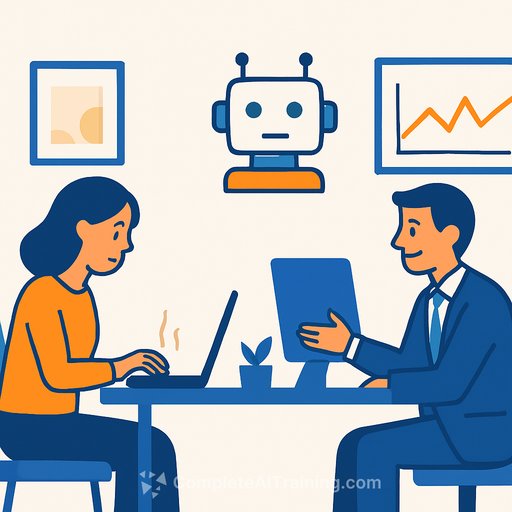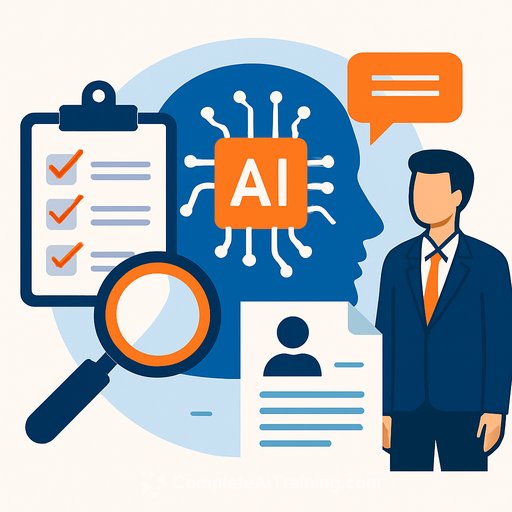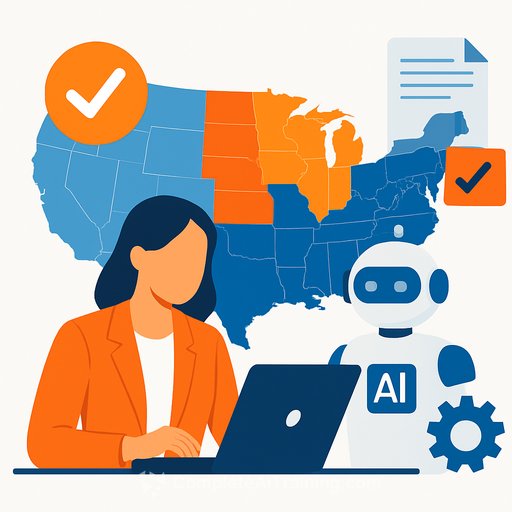Quiet cracking at work: why empathy beats AI-driven ratings
Performance dashboards look clean. People look composed on calls. Yet under the surface, some employees are running on fumes. That quiet strain has a name: "quiet cracking."
It shows up as emotional exhaustion masked as steady output. In AI-heavy environments, that exhaustion can be mistaken for disengagement because algorithms read the data, not the human context.
As one HR leader put it, "In an AI-driven workplace, where data rules decisions, that fatigue can look like underperformance." Gokaldas Exports CHRO Amit Sharma cautions that this can skew decisions about who stays and who leaves. His stance is clear: automation can spot patterns, but empathy must lead the judgment. "AI should support, not replace, empathy-driven evaluation," he says.
Fractal Analytics Chief People Officer Rohini Singh points to the root cause: repeated restructuring and a constant learning-proving cycle. Employees feel like permanent beginners. The fear of skills going stale creates burnout-like dips, even among high performers.
There's also a deeper tension: people are trying to look endlessly adaptable while competing with algorithms that never tire. That pressure pushes some into silent distress. A neat calendar and a calm tone become a mask.
Signals HR and managers should watch
- Present but withdrawn: attends meetings, rarely contributes, keeps camera off more often.
- Idea drought: fewer suggestions, minimal risk-taking, quick agreement to avoid friction.
- Energy leaks: delayed responses, missed informal touchpoints, reduced cross-team collaboration.
- Perfectionism spikes: overworking small tasks, fear of shipping, anxiety around visibility.
- Unplanned time off or frequent "personal hours" without a clear recovery trend.
What HR can do this quarter
- Reset manager rituals: Weekly 1:1s with two prompts: "Where's your energy this week?" and "What would make next week easier?" No status updates. Just health and friction.
- Calibrate AI + human review: Require human review before any AI-flagged performance action. Weigh qualitative input from peers and customers, not just usage or quota data.
- Change hygiene: Set change-free windows after reorganizations. Cap mandatory training hours per quarter so the "learn-and-prove" loop doesn't drain people.
- Psychological safety practices: Normalize open forums and reverse town halls. CEAT (RPG Group) pairs policies like unlimited sick leave, menstrual leave, and 24x7 helplines with open dialogue to keep people seen and supported.
- Stay interviews, not exit surprises: Run quarterly stay interviews for at-risk roles. Track themes and fix root causes quickly.
- Manager enablement: Train managers in emotional intelligence, active listening, and hard conversation skills. If your team needs AI fluency to reduce anxiety, point them to practical upskilling resources like Complete AI Training.
- Metrics beyond output: Add pulse items on psychological safety, role clarity, workload fairness, and change fatigue. Publish actions within 30 days of each pulse.
Guardrails for AI in performance decisions
- Define behaviors, not vibes: Tie ratings to observable actions and outcomes. No vague "low energy" tags.
- Lag-before-flag: Require a trend (e.g., 6-8 weeks) before a negative label triggers review.
- Context capture: Allow employees and managers to add context on workload shifts, caregiving, health, and change events.
- Explainability: Any AI score used in reviews must show the inputs behind it, in plain language.
- Appeal path: Give employees a simple way to challenge AI-driven signals with human escalation.
- Bias checks: Quarterly audit by HRBPs and data teams for role, gender, age, and location bias. Adjust weighting if drift appears.
Policies worth piloting
- Recovery with trust: Unlimited sick leave with manager check-ins focused on re-entry, not scrutiny.
- Learning days: One protected skills day per month. Make it visible, not hidden "after hours."
- Post-reorg guardrails: Meeting-light weeks and smaller sprint goals after major changes.
- Always-on support: 24x7 helplines and anonymous Q&A channels to surface concerns early.
Younger employees are setting a new baseline
They speak up about mental health, set boundaries, and call out toxic norms. That isn't fragility; it's a standard. Treat it like an early warning system for culture, and your veterans will benefit too.
30-60-90 plan for HR teams
- 30 days: Inventory every AI signal used in performance. Launch stay interviews for critical roles. Run a short pulse on safety, workload, and clarity. Align on what "underperformance" actually means.
- 60 days: Pilot human-in-the-loop reviews. Train managers on energy check-ins and feedback. Set a cap on mandatory training hours.
- 90 days: Publish an AI fairness note to employees. Roll out post-reorg guardrails. Report progress on pulse actions.
Burnout is recognized as an occupational phenomenon by the WHO; it's a signal, not a character flaw. If you need a refresher on definitions and symptoms, see this overview from the World Health Organization: WHO on burnout.
The takeaway is simple: data can rank, but it can't care. As AI spreads through performance systems, the edge belongs to teams that pair sharp metrics with human judgment. That mix keeps your best people engaged, prevents silent distress, and builds a workplace that's emotionally and digitally smart.
Your membership also unlocks:






